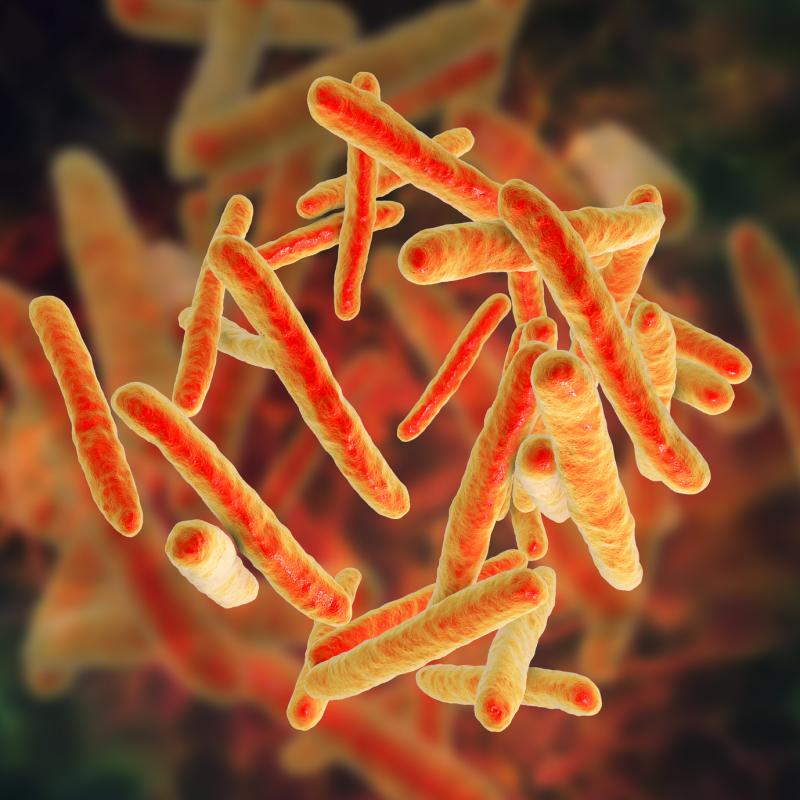 Tuberculosis is a lethal disease that impairs lung function due to widespread infection and can potentially cause death if left untreated.
Tuberculosis is a lethal disease that impairs lung function due to widespread infection and can potentially cause death if left untreated.Physicians should consider an abdominal tuberculosis (TB) diagnosis in children presenting with abdominal and constitutional symptoms, argues a recent Singapore study.
“Although pulmonary TB is the most common form of disease manifestation, extrapulmonary TB can affect other systems including lymph nodes, intestines, bone, joints and meninges, and so on,” the researchers said.
Over a 10-year period, six paediatric patients (mean age, 11.3 years; 3 males) were eligible for inclusion in this retrospective case series. Most of these children presented to the hospital with fevers, weight loss and abdominal symptoms, such as diarrhoea, vomiting and loss of appetite. One patient displayed abdominal distension. [Glob Pediatr Health 2020;7:2333794X20903952]
None of the participants had a history of TB. Initially, three had other diagnoses, including protein-losing enteropathy secondary to inflammatory bowel disease, haematological malignancy and infective gastroenteritis. One patient had isolated abdominal TB, while all five others had pulmonary involvement.
Anaemia was detected in all participants, such that the mean haemoglobin concentration was 10.1 g/dL. The inflammatory markers C-reactive protein and erythrocyte sedimentation rate were both elevated in all patients. Only one had abnormal white blood cell count on admission.
All patients underwent microbiological confirmation, with half testing positive on acid-fast bacilli smearing and all cultures testing positive.
Chest X-rays were performed on all patients, though only two showed abnormalities. In one such case, the first X-ray returned normal but a subsequent computed tomography (CT) scan found multiple nonspecific pulmonary nodules in both lungs.
Similarly, abdominal ultrasound was performed on all patients and only one showed normal findings. Abnormal results included hepatomegaly, splenomegaly and inflammation with lymphadenopathy, manifesting as thickening of the bowel wall. CT scan of the abdomen in two patients showed splenic, hepatic and mesenteric lesions, and retroperitoneal lymphadenopathy.
In terms of treatments, the four-drug combination of rifampicin, isoniazid, pyrazinamide and ethambutol was administered to all participants for 2 months, after which a double anti-TB regimen was sustained for 4–10 more months.
At the end of treatment, four patients showed complete resolution of intra-abdominal lesions. This included two that required surgical interventions. The remaining two patients, on the other hand, though asymptomatic for abdominal manifestations, experienced pulmonary complications, including worsening pleural effusion.
One patient died 2 years later due to severe refractory hemophagocytic lymphohistiocytosis with multi-organ failure, which according to the researchers was unlikely to be related to TB.
“Abdominal TB should be strongly considered in children with abdominal and constitutional symptoms such as prolonged fever, loss of weight with change in bowel habits, with associated biochemical findings of anaemia, and raised inflammatory markers,” said the researchers.
“Long-term follow-up is essential for these children, to ensure resolution of symptoms after the completion of therapy, as well as to follow-up on their growth and surveillance for complications such as bronchiectasis for those with pulmonary involvement,” they added.